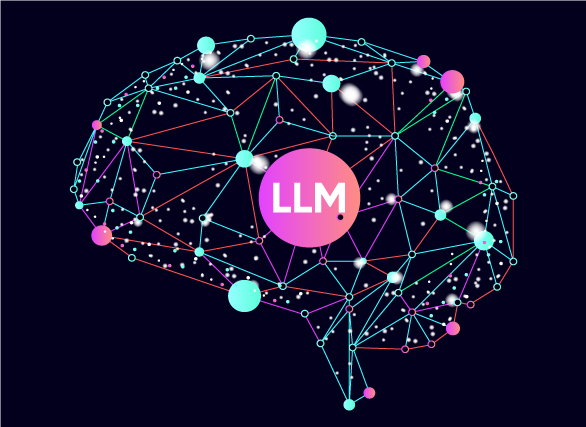
In an era prioritizing user-centricity and operational efficiency, the strategic use of LLM emerges as a vital differentiator. This blog, "Navigating the SaaS Landscape with Large Language Models," delves into the strategic imperative molding the future of software as a service. Unveiling insights beyond traditional boundaries, we explore how language models drive SaaS into an era defined by efficiency, engagement, and strategic relevance. Join us as we unravel key insights defining the intersection of SaaS and the transformative capabilities of Large Language Models.
In the ever-evolving realm of Software as a Service (SaaS), the integration of Large Language Models (LLM) stands as a game-changing strategy. This blog, "Navigating the SaaS Landscape: A Guide to Implementing Large Language Models," is your comprehensive guide to unleashing the power of LLM in your SaaS applications.
Understanding the Strategic Imperative:
In a landscape where user-centric experiences and operational excellence are non-negotiable, the incorporation of LLM becomes a pivotal move. We'll delve into the strategic imperative driving this fusion of SaaS and advanced language technologies, shaping the future of digital interactions.
Unraveling the Power of Language Models:
Join us in exploring how LLM goes beyond conventional boundaries, becoming a transformative force steering SaaS into a new era of efficiency, engagement, and strategic significance. We'll uncover key insights and considerations defining this intersection and discover practical steps for implementation.
Key Topics Covered:
- Strategic Significance of LLM in SaaS:
Understand why LLM is not just a trend but a strategic necessity in the SaaS landscape. Explore real-world scenarios where LLM brings tangible benefits to user experiences and operational workflows.
- Implementation Steps and Best Practices:
Get a step-by-step guide on how to seamlessly integrate LLM into your existing SaaS applications. From data preparation to model deployment, we'll cover best practices, potential challenges, and how to overcome them.
- Industry Insights and Success Stories:
Gain valuable insights from industry-specific use cases and success stories. Learn how leading organizations are leveraging LLM to drive innovation, enhance customer satisfaction, and stay ahead in the competitive SaaS market.
Stay Ahead in the SaaS Game:
As we navigate through this exploration, you'll acquire the knowledge needed to stay ahead in the SaaS game. The convergence of SaaS and LLM is not just a technological evolution; it's a strategic shift that can redefine your software's capabilities and set your organization on a path of continuous innovation.
Embark on this journey with us, and let's unlock the transformative potential of Large Language Models in the dynamic landscape of Software as a Service.
Forget buzzwords and marketing fluff; let's delve into the technical nitty-gritty of integrating Large Language Models (LLMs) into your SaaS applications. We're talking code, architectures, and real-world implementation strategies for the technically-inclined.
Why Integrate LLMs?
The benefits are undeniable:
Automating content creation: Generate personalized copy, code snippets, or even product descriptions tailored to user segments.
Enhancing customer service: Build chatbots powered by LLMs that understand natural language and provide human-like support.
Extracting actionable insights: Analyze vast datasets with uncanny accuracy, uncovering hidden patterns and informing data-driven decisions.
Personalizing user experiences: Tailor interfaces, recommendations, and content based on individual behavior and preferences.
The Technical Landscape:
Public APIs:
Pros: Quick integration, familiar API paradigms, access to cutting-edge models like OpenAI's ChatGPT or Google's Bard.
Cons: Limited control over model behavior, potential data privacy concerns, dependency on third-party infrastructure.
Fine-tuning Existing Models:
Pros: Adapts pre-trained LLMs to your specific domain and data, improves performance and relevance.
Cons: Requires access to large datasets, expertise in model training and optimization techniques.
Building Custom LLMs:
Pros: Ultimate control over model architecture and behavior, perfect for niche applications or unique requirements.
Cons: Significant resource investment, requires deep expertise in machine learning and natural language processing.
Remember, successfully integrating LLMs into your SaaS application requires a blend of technical expertise, user-centric design, and ongoing optimization. By navigating the technical landscape, implementing best practices, and staying ahead of the curve, you can leverage the power of LLMs to create truly innovative and engaging SaaS experiences.
- By The Invimatic Editorial Team
- 23 August, 2023
- Categories: SaaS Applications


